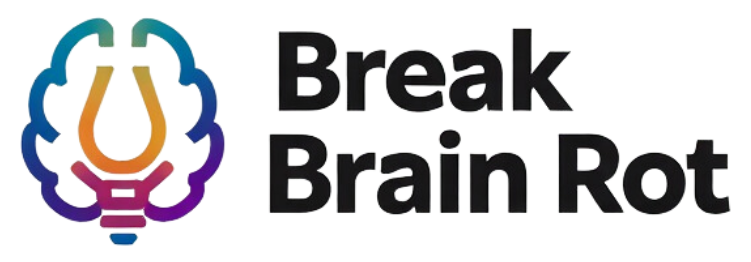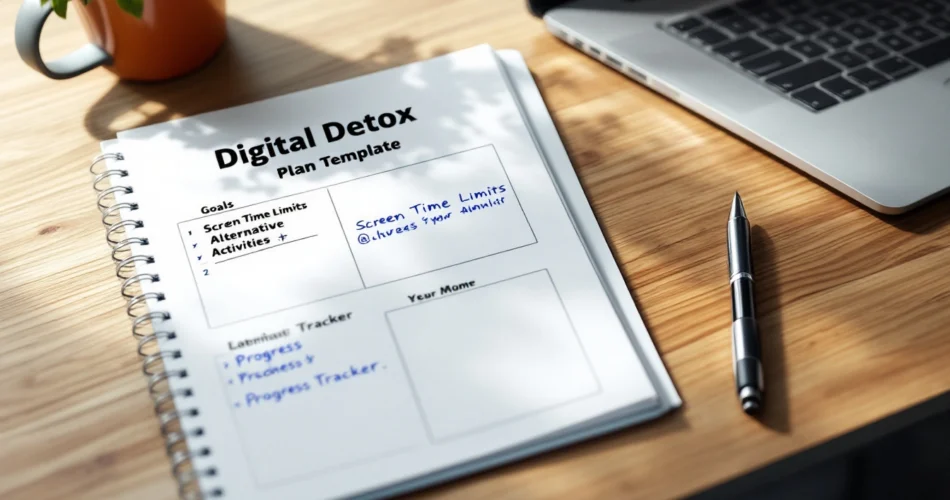Table of Contents
- Why You Need a Digital Detox Plan
- Step-by-Step Digital Detox Plan Template
- Tools and Resources to Support Your Detox
- Common Challenges and How to Overcome Them
- Long-Term Benefits of a Digital Detox Plan
- FAQs
- Conclusion
Why You Need a Digital Detox Plan
The impact of technology on mental health
Endless digital engagement is linked to higher stress and reduced mental resilience. Studies by the American Psychological Association highlight how prolonged screen time can amplify anxiety, disrupt attention spans, and worsen sleep quality. Over time, this can lead to feelings of burnout and isolation.
Digital distractions and productivity drain
Switching between apps, tabs, and notifications often tricks us into believing we’re multitasking effectively. In reality, focus is fragmented, which reduces overall productivity. Research shows we lose valuable time refocusing after every digital interruption. If you want better time management, consider exploring practical productivity strategies as part of your detox journey.
The balance between technology and lifestyle
Completely cutting out technology isn’t realistic for most people. Instead, a well-planned detox allows you to set boundaries, prioritize offline activities, and develop a healthier digital lifestyle rather than abandoning devices entirely.
Step-by-Step Digital Detox Plan Template
Setting clear goals
Before you begin, ask yourself what you want to achieve. Do you hope to sleep better? Spend more time with loved ones? Improve your concentration? Setting measurable goals provides motivation and helps you evaluate progress.
Choosing your detox duration
Not everyone needs the same length of detox. Beginners might start with a single device-free day. A weekend reset can be especially powerful, while a week-long detox provides deeper reset benefits. Choose what matches your lifestyle and commitments.
Structuring your daily routine
Fill the time you’d usually spend on screens with offline alternatives. A morning yoga session, journaling, or taking a walk helps structure your day without relying on devices. If you need guidance, you can explore mindfulness exercises that promote calm and focus during your detox period.

Tools and Resources to Support Your Detox
Apps that limit screen time
If going cold turkey feels difficult, apps like Forest, Freedom, and Apple’s Screen Time can help monitor and restrict digital usage. You can find more tools on Google Digital Wellbeing.
Offline activities and hobbies
Replace digital entertainment with fulfilling offline experiences: read a book, paint, explore nature, or try journaling. These activities nurture creativity and mental clarity, making your detox more enjoyable.
Accountability and support systems
Include family or friends in your plan. Announcing your detox holds you accountable and helps create a support network that reduces the urge to relapse. You might even consider joining a health or mindfulness group for extra motivation.
Common Challenges and How to Overcome Them
Dealing with withdrawal symptoms
Short-term issues like FOMO, boredom, or restlessness are normal during detox. Combat these by having a list of offline activities ready and reminding yourself of your original goals.
Managing work responsibilities without overreliance on tech
Many jobs require digital access, but boundaries can still be set. Turn off push notifications during non-work hours, batch emails instead of checking constantly, and explore work-life balance strategies designed to reduce stress while staying productive.
Creating a sustainable balance post-detox
After your detox ends, avoid falling back into old patterns. Slowly reintroduce technology and apply limits, such as no-phone zones during meals or avoiding screens before bed.
Long-Term Benefits of a Digital Detox Plan
Improved focus and productivity
Less screen time means fewer distractions. You’ll find it easier to concentrate on deep work when you’re not splitting attention across multiple devices.
Stronger relationships and social interaction
When you spend less time online, you naturally invest more energy into face-to-face connections. This strengthens empathy, builds trust, and creates meaningful experiences with loved ones.
Better sleep and mental clarity
Excessive screen time at night disrupts natural sleep cycles. Studies from the Sleep Foundation show that blue light from devices interferes with melatonin production. A detox helps your brain reset, leading to deeper rest and better mental clarity.
Frequently Asked Questions
How long does a digital detox plan need to be effective?
Even a single day can be effective for beginners. However, a weekend or a full week offers more noticeable benefits.
Can I do a digital detox plan if my job requires being online?
Yes. Set boundaries during work hours and limit unnecessary screen use outside of work. This balance allows for a partial but effective detox.
What activities can replace screen time effectively?
Journaling, outdoor walks, fitness, meditation, and hobbies such as cooking or painting are excellent alternatives.
Is it normal to feel restless during a digital detox?
Yes. Restlessness, boredom, and FOMO are common initially but fade as your body and mind adjust to lower screen stimulation.
How do I maintain the benefits after finishing a detox?
Establish ongoing rules like phone-free meal times and screen curfews before bedtime to sustain long-term balance.
Conclusion
A structured digital detox plan template provides the roadmap you need to reduce stress, improve productivity, and reconnect with what truly matters. By setting clear goals, using the right tools, and finding fulfilling offline activities, you can overcome screen fatigue and achieve long-lasting lifestyle improvements. Start small, personalize your detox based on your needs, and take the first step today. You might be surprised at just how much clarity and energy you gain when you unplug—even for a little while.

